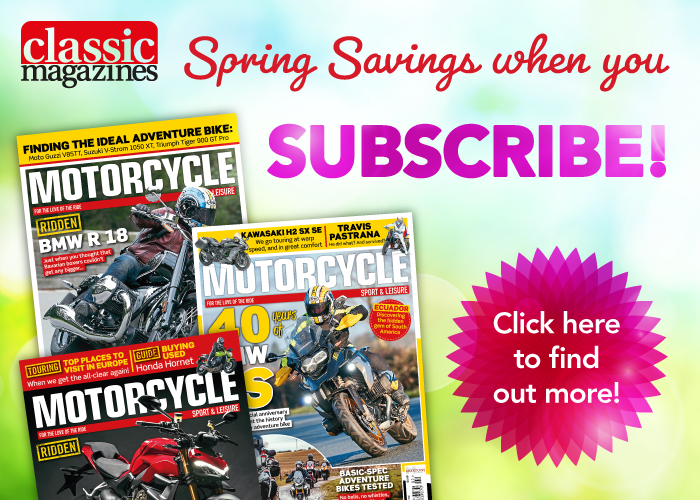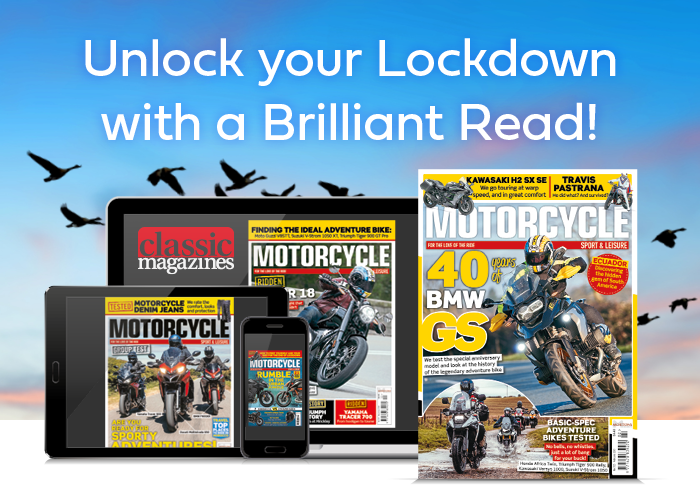Oman is all deserts and camels, right? Not if you ride 750 miles to Shalalah
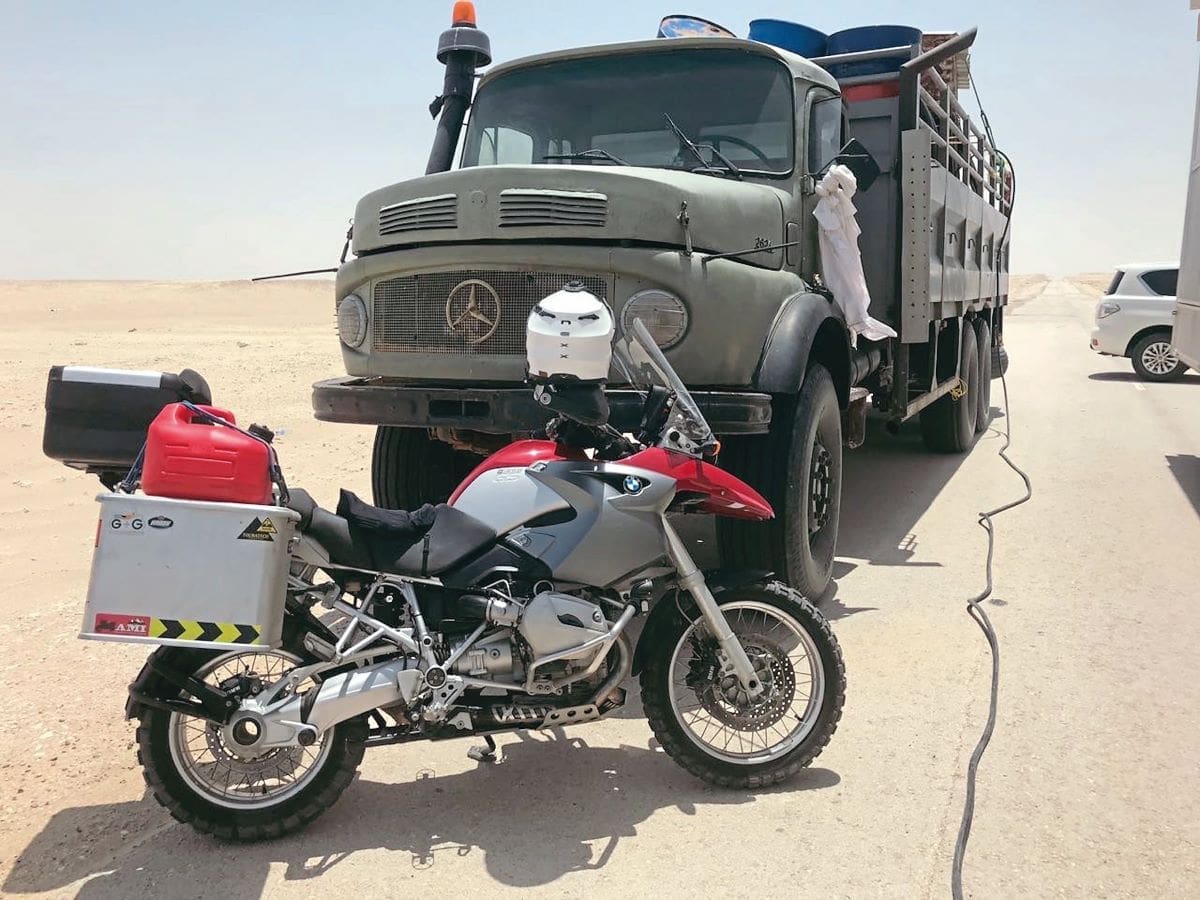
WORDS & PHOTOGRAPHY: Robert Ryan
Based in Dubai, with six days off in prospect, my wife and kids back in Europe, I would soon be leaving the Middle East for good – for a second attempt at the long trip down Salalah, so it was now or never.
Enjoy everything MSL by reading the monthly magazine, Subscribe here.
Located in the far south of Oman, Salalah is an amazing oasis of lush green hills in an otherwise dry barrel desert region. It boasts wild, empty beaches, seasonal waterfalls and, best of all, an average summer temperature of 27 degrees, while the rest of Oman and the Middle East swelters in 45 degrees and horrible humidity.
Most people travelling to Salalah from the UAE will fly, as it’s a long 1200km drive down through empty desert on dangerous roads, and in August with the heat, humidity and blowing sand, it’s no fun on a bike. Still, this was my last chance to have a go at riding there.
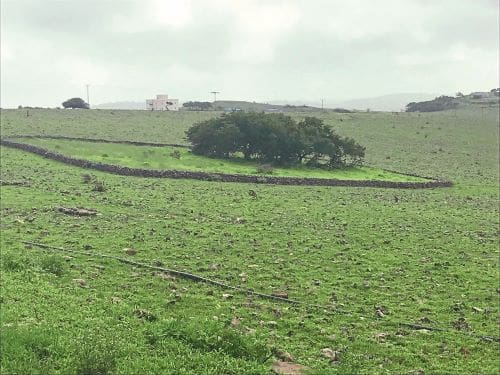

My first attempt, two years earlier with a friend on another GS, started well but was followed by two days of riding into a vicious 40mph crosswind, with blowing sand and reduced visibility. We decided to give up after the weather had sand blasted my bike’s screen to a terminal shade of opaque (requiring a replacement) and also took a layer of skin off the upwind side of my neck. Riding south towards Salalah meant leaning hard over into the crosswind. That was, until a truck passed in the opposite direction on the two-lane highway, and the resulting wind blast did its best to rip you out of the saddle.
The forecast was for another week of the same, and to keep going meant another two days to get there, and another two to come home in the same conditions. We decided to end the misery and call it quits.
Change in 50k
This time the wind had gone, though the brutal heat and humidity remained. I find that once the temperature gets up to 45 degrees or more, more clothing rather than less is better, wrapped up loosely. That, and drinking constantly from a two-litre camelback. Once covered up, I’d also pour a small bottle of water down my neck and inside my jacket – the slow evaporation helped reduce the heat and all of this helps endure the oven that is Oman in the summer.
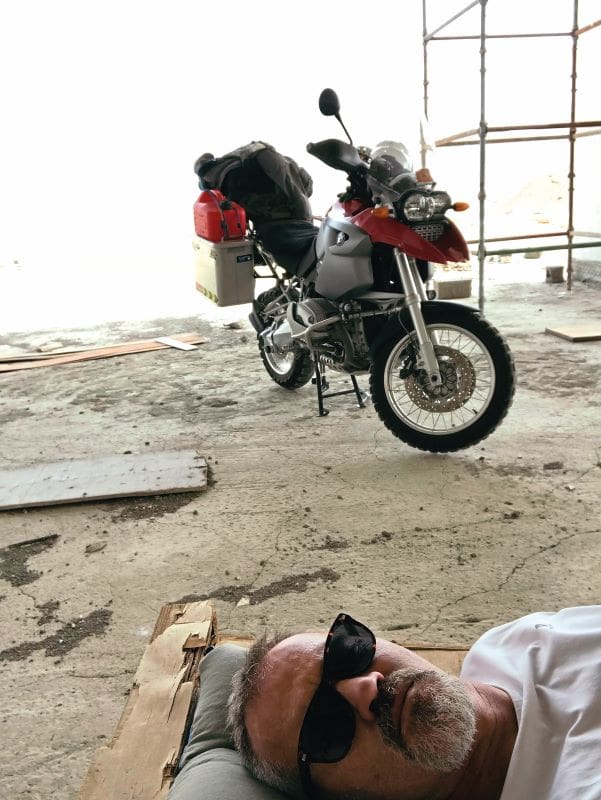

By the end of the first day, the only thing causing me a problem was the deep sunburn on the exposed part of my wrists, between the top of my gloves and the end of my sleeves. I needed to find a way to cover them up and the solution was to sacrifice a good pair of socks, cutting the ends off and turning them into ‘wristwarmers’. That apart, it was a question of willpower, lots of water and an occasional nap when some shade could be found.
After two long days of brown empty desert, the road veered east towards the coastline and a hint of blue on the horizon replaced the previous day’s yellow haze. Before long, the desert view had been replaced by miles of empty beaches, with nobody in sight. Apart from the occasional dilapidated fishing village, there is really nothing in this part of Oman and its name – ‘Rub’al Khali’ or ‘Empty Quarter’ which separates Salalah from the rest of the Arabian Peninsula – really sums it up well.
After half a day riding along the coast, the terrain changed dramatically, and it happened all of a sudden, in the space of 50km or so. The empty beaches were replaced by mist-covered hills and lush green countryside. It was so green and damp we could almost have been somewhere in the west of Ireland with cows, mud and damp roads. Best of all though, the temperature was now a delicious 29 degrees.
I had crossed into Dhofar, the region that borders Yemen, on the southernmost coast of Oman. The beauty and contrast of Salalah is thanks to the ‘Khareef’, the only monsoon in the Arabian Peninsula, which during the unbearably hot months of July and August creates an amazing microclimate, bringing clouds rolling in to deliver a constant drizzle, giving birth to the greenery and waterfalls for which Salalah is best known.
I spent two days exploring the hills and mountains and was thankful for the 80/20 Shinko 804 off-road tyres I had on the GS which, while less than ideal for the previous two days of highway, were making life much easier on the mud-covered hill roads. There was plenty to see around Salalah, and I passed through green countryside, past waterfalls, swollen rivers and farms full of cattle, all looking completely at odds with the traditionally dressed locals.

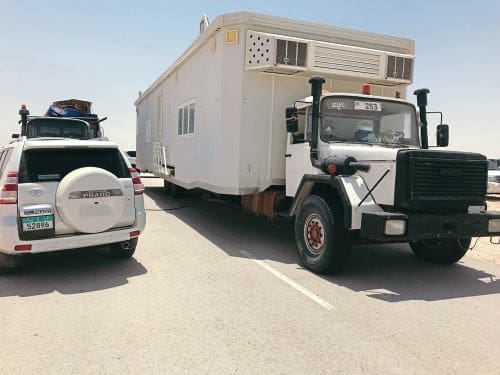
Pecking order
The time came to head home and on the morning of the fifth day I set out early from my small hotel to make sure I’d get my daily mileage done – I also had to make it back in time for work. Leaving Salalah and heading due north meant climbing up into and crossing the mountains overlooking the city, riding in the dark through a thick, soaking fog.
As we climbed higher the temperature dropped, and combined with my now sodden summer gear, meant that I was now freezing cold and had to stop to don any remaining clothes – dirty or otherwise. It was hard to imagine that five days earlier I had been packing for the trip in the heat of Dubai. But having crossed the mountains and descended back into warmer air the fog disappeared, the heat returned and the long slog home awaited.
There is a pecking order of vehicles on the roads of Oman and the UAE, and on a bike you are pretty much at the bottom, expected to take to the ditch or make way whenever a car approaches.
As such, I was considered an overtaking opportunity for traffic coming the other way on the two-lane road. Even on a big GS, planted firmly in the middle of my lane with headlights and riding lights on, the oncoming traffic would whip out on to my side of the road and overtake, heading straight for me, lights flashing and horn blaring in a game of chicken. I was the loser, forced over on to the hard shoulder to avoiding the oncoming two tonnes of Land Cruiser blasting past in a cloud of sand.
Meanwhile, the wind picked up again, with visibility reduced drastically in the swirling sand, and once again riding became a stressful misery. Between avoiding the oncoming maniacs and in the next instant being overtaken from behind, I decided to stop much earlier than planned on that first day – it was becoming too dangerous.
I found a truckstop with a small, depressing hotel and spent the night there, but was up at 4am next morning, hitting the road to try in an attempt to stay on schedule. The wind had calmed down and, even better, the road was quiet, so I felt better about making up the previous day’s lost mileage.

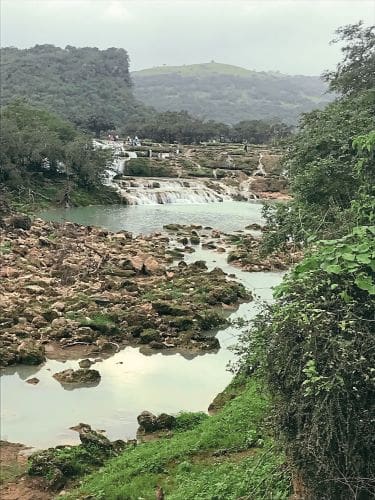
An invitation
Just before lunchtime I saw traffic ahead stopped, and slowed to join the queue, wondering what the hold up was about. Riding up to the front of the line, I found that we were waiting for a huge herd of camels, at least a few hundred of them, to cross the road. I got chatting with one of the Bedouin supervising the crossing, and he explained that he and his family were camel breeders and were moving the herd from Salalah all the way up to the UAE camel markets on foot, a trek lasting three months or more.
These were black-haired camels, and a good one can fetch up to $55,000 in the UAE markets, enough to buy a new Land Cruiser. And even that’s not top whack. In 2017 the Crown Prince of Dubai paid a record $2.7 million for a female camel at Abu Dhabi, the camel beauty pageant.
A strong camel can carry 200kg for 50km in a day (60km if worked in the cooler nights), can run at up to 25mph in short bursts, and survive severe heat without drinking for up to seven days.

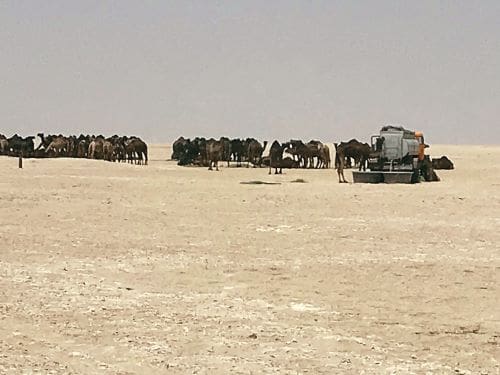
The man explained how he and his family lived with the herd, gesturing over what looked like a large mobile home parked up with a few other vehicles. He turned and started to walk away, gesturing for me to follow. “Come for a coffee!”
I rode the bike over to what was basically a huge Portacabin mounted on a long chassis with an old Mercedes truck attached in front. This was home to the extended family and was driven slowly along a narrow concrete lane which ran alongside the main road, about 100 metres away. The lane had been built by the Government specifically to allow these Bedouin caravans to travel throughout the country. Two other old Mercedes trucks formed the rest of the mobile encampment, one carrying a massive generator and diesel tank, with cables stretching over to power the mobile home. The other was full of camel feed, while two Land Cruisers acted as outriders.
I parked the bike and as my Bedouin friend waited at the bottom of a set of metal stairs outside the Portacabin, I was struck by how bizarre this felt. One minute I had been on the bike for hours, alone in the middle of nowhere, and the next I was about to enter another world and meet new people.
As we mounted the steps five men came into view, lying in the sand beneath the mobile home. My host explained that they were Pakistani and Afghani camel herders who lived with and looked after the camels, walking alongside them the whole way.
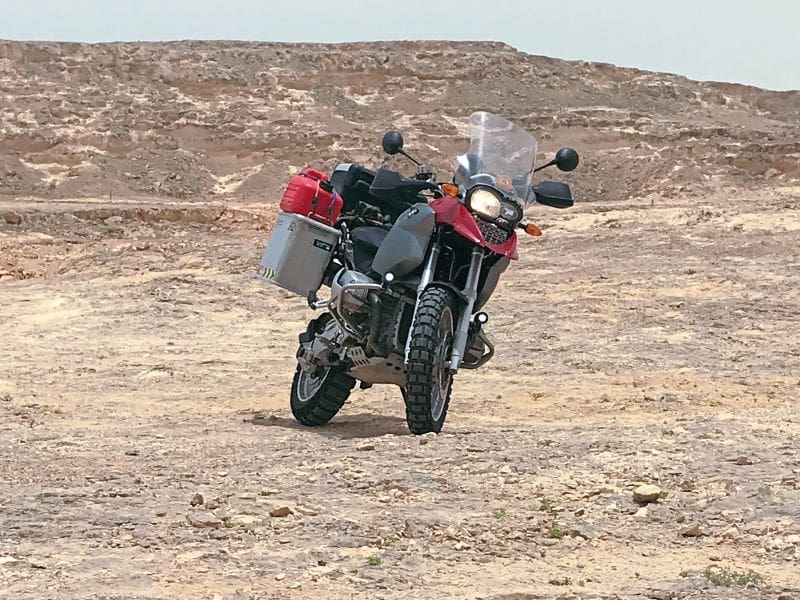
I left my boots at the top of the steps, walking through a door into a hallway. Then another door opened to reveal a huge ornate lounge area, complete with gilt wallpaper, rugs and wall-length Arabic sofas. The room was ice cold thanks to a huge air-con unit, and four Bedouin sat drinking coffee. I was introduced to the most senior first, who turned out to be the head of the family. The other four, all his sons, ranged in age from 20s to 40s.
The whole extended family lived here, the sons with their wives and children plus two or three housemaids. I was given coffee and dates while the family conversation flowed on. The son who I had met outside, being the only one who spoke English, would translate the occasional question from his father, then continue explaining how they lived and moved with the herd.
They were basically self-sufficient, with enough fuel and camel feed to last for a month or more. When needed, they would drive to the nearest town in one of the Land Cruisers to go shopping, the trucks being too big to leave their purpose-built lanes.
After half-an-hour or so the head of the family stood up, opened the window and called out to the herders below, one of whom ran off towards the camels and appeared in the room 10 minutes later holding a huge bowl of frothing camel’s milk. I realised, not without a degree of apprehension, that it was meant for me.
I was handed the bowl, and with all eyes in the room watching intently, realised I was expected to drink it. I held the bowl with both hands and took a large gulp. When I started to lower it the father gestured for me to keep going, which I did while trying not to taste it… and kept my expression as neutral as possible.


I thanked him graciously, hoping I had consumed enough, and not caused any offence. He seemed reasonably satisfied, and one of the wives and a couple of young children brought in some Madluka, an Omani dessert made from date paste and sesame seeds, before we sat down again to more coffee. I was amazed by the hospitality I was being shown, as a complete stranger covered in dust and dirt, showing up on their doorstep unannounced.
I was also struck by how happy and content the family seemed to be, living what seemed to be a very simple and carefree life. Apart from the modern conveniences, it was basically the same lifestyle that Bedouins have lived for centuries, on the move, with their beloved camels.

It felt like I could spend a few days here, and nobody would have batted an eyelid, but I was running out of time, so said my goodbyes. Once back on the road and alone again, I thought about my unexpected insight into this other world. I could not have been made to feel more welcome, and while Salalah had been an amazing place to see and explore, my unexpected lunch invitation with the Bedouin had been the highlight by far. Once again, it showed that it’s these unexpected human interactions which make travelling such a joy.
GPX: https://www.dropbox.com/s/cx5nwvut25d7mhv/bigride730.gpx?dl=0
Many of our routes are supplied by our contributors, and relate to adventures they may have had several years ago. As with files given freely by any source, always check the journey before you leave, and use common sense when following. Happy travels…











